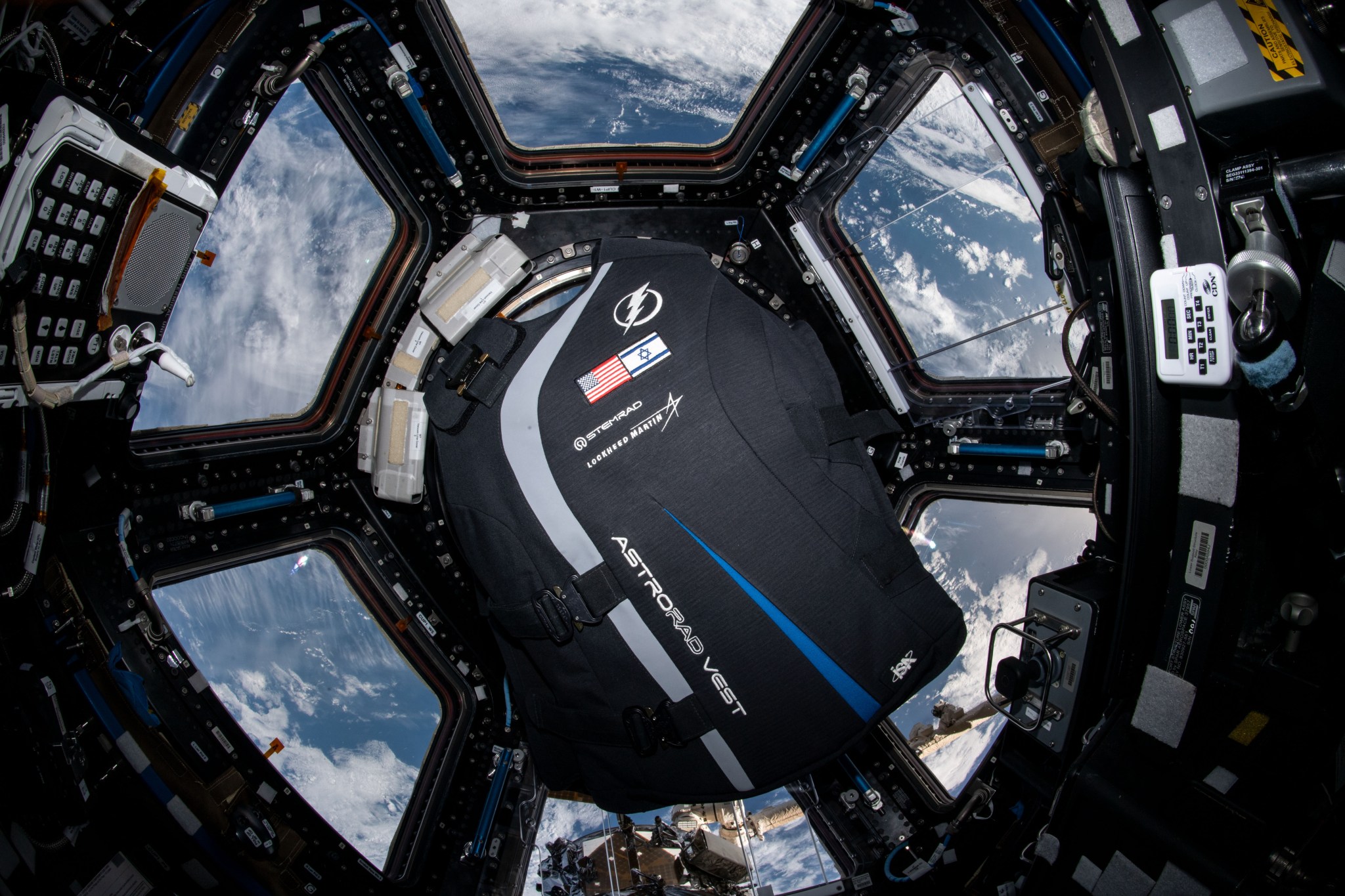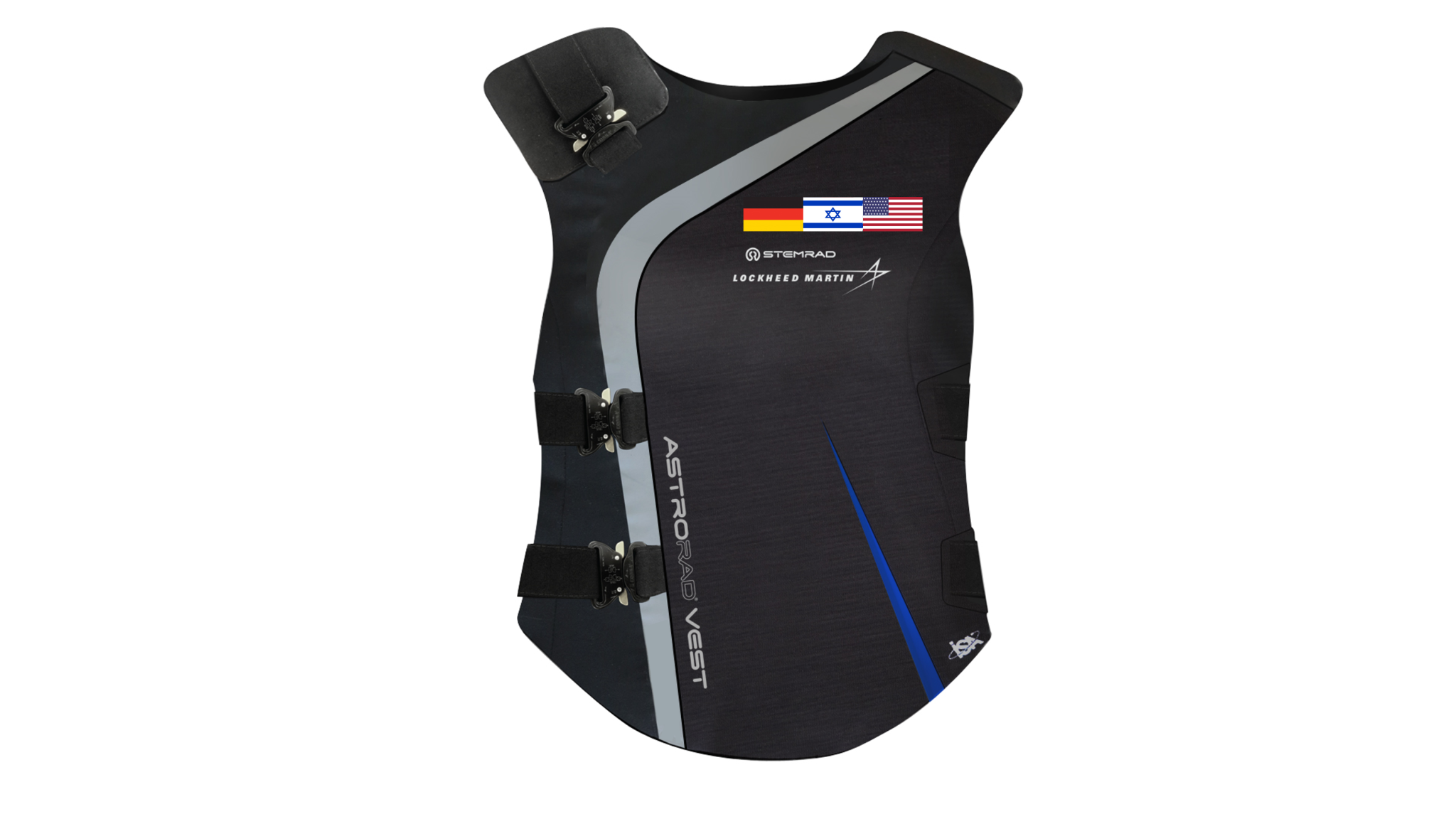As NASA leads the way for human exploration at the Moon and beyond, space radiation is one of the biggest hazards crews face. In 2018, NASA signed an agreement with the Israel Space Agency (ISA) and the German Aerospace Center (DLR) for an experiment to test the AstroRad radiation protection vest on Artemis I, the first flight test of the Space Launch System (SLS) rocket and Orion spacecraft. The investigation, called the Matroshka AstroRad Radiation Experiment (MARE), will provide valuable data on radiation levels during missions to the Moon while testing the effectiveness of the new vest. Artemis missions at the Moon will pave the way for human exploration of Mars.
Earth’s atmosphere and magnetic shielding protect us from most of the radiation in the universe, including radiation from our Sun. When astronauts leave Earth, they’re exposed to the full spectrum of radiation present in deep space. The Artemis I mission will not carry crew, but two identical manikin torsos equipped with radiation detectors. They will fly aboard Orion during the three-week mission, traveling about 280,000 miles from Earth and thousands of miles beyond the Moon.
The manikins, called phantoms, are manufactured from materials that mimic human bones, soft tissues, and organs of an adult female. Their names are Helga and Zohar and, despite sharing the trip, their missions will be different – Zohar will wear the AstroRad vest, while Helga will not. Female forms were chosen because women typically have greater sensitivity to the effects of space radiation, but the AstroRad vest is designed to protect both men and women.
The phantoms have a three-centimeter grid embedded throughout the torsos that will enable scientists to map internal radiation doses to areas of the body that contain critical organs. With two identical torsos, scientists will be able to determine how well the new vest might protect crew from solar radiation, while also collecting data on how much radiation astronauts might experience inside Orion on a lunar mission – conditions that cannot be recreated on Earth.
The ISA will provide the AstroRad vest for the mission, which was developed by an Israeli company called StemRad in collaboration with Orion lead contractor, Lockheed Martin. The DLR will provide the phantoms and the majority of the radiation detectors, with further contributions by universities from around the world.
In a related investigation currently underway on the International Space Station, the Comfort and Human Factors AstroRad Radiation Garment Evaluation (CHARGE) study will assess the ergonomics, range of motion, comfort and general user experience of the AstroRad vest in a microgravity environment. Insights from the study will help improve the fit and function of the vest.
MARE builds upon previous experiments performed on the space station using phantoms and other instruments to measure radiation exposure in low-Earth orbit. Astronauts on station are exposed to radiation levels about 50 times higher than that experienced by people on Earth. Farther from Earth’s magnetic field and into interplanetary space, the level of radiation exposure during exploration missions could be much higher – up to 150 times more. Human beings exposed to large amounts of radiation can experience both acute and chronic health problems ranging from immediate radiation sickness to developing cancer in the future.
Orion was designed to protect both humans and hardware during radiation events on Artemis missions. For example, in the event of a solar flare, Orion’s crew can take cover in the central part of the crew module, between the floor and the heat shield, using the stowage bags on board to improve shelter. However, the crew may have to stay in such a shelter for more than a day. With a protective vest to help block solar energetic particles, crew could continue working during critical mission activities in spite of a solar storm.
Orion will also have different types of radiation sensors on board to record both the peak level of radiation exposure during the flight, as well as radiation levels throughout the mission. Researchers can then compare the data with mission telemetry to reveal where and when the radiation was encountered. While the AstroRad vest is designed primarily to protect against solar energetic particles that are ejected from the sun during a solar eruption, researchers are also developing and evaluating ways to shield crew from galactic cosmic rays, another type of radiation that comes from all over the galaxy and is more challenging to protect against.
With the data from MARE and other sensors, NASA and its partners will improve their ability to prepare for, and limit the effects of, radiation exposure as human beings travel farther into space on longer missions. Reducing the risks due to radiation exposure is important for missions that could last as long as three months at the Gateway outpost in lunar orbit, and future missions to Mars, currently estimated to be a three year round-trip journey.
NASA is working to land the first woman and first person of color on the Moon as part of Artemis. Orion, the Space Launch System rocket and the Gateway are part of NASA’s backbone for deep space exploration. Through the agency’s broader Moon to Mars exploration approach, NASA will establish a long-term presence at the Moon and prepare for humanity’s next giant leap, sending astronauts to Mars.




























